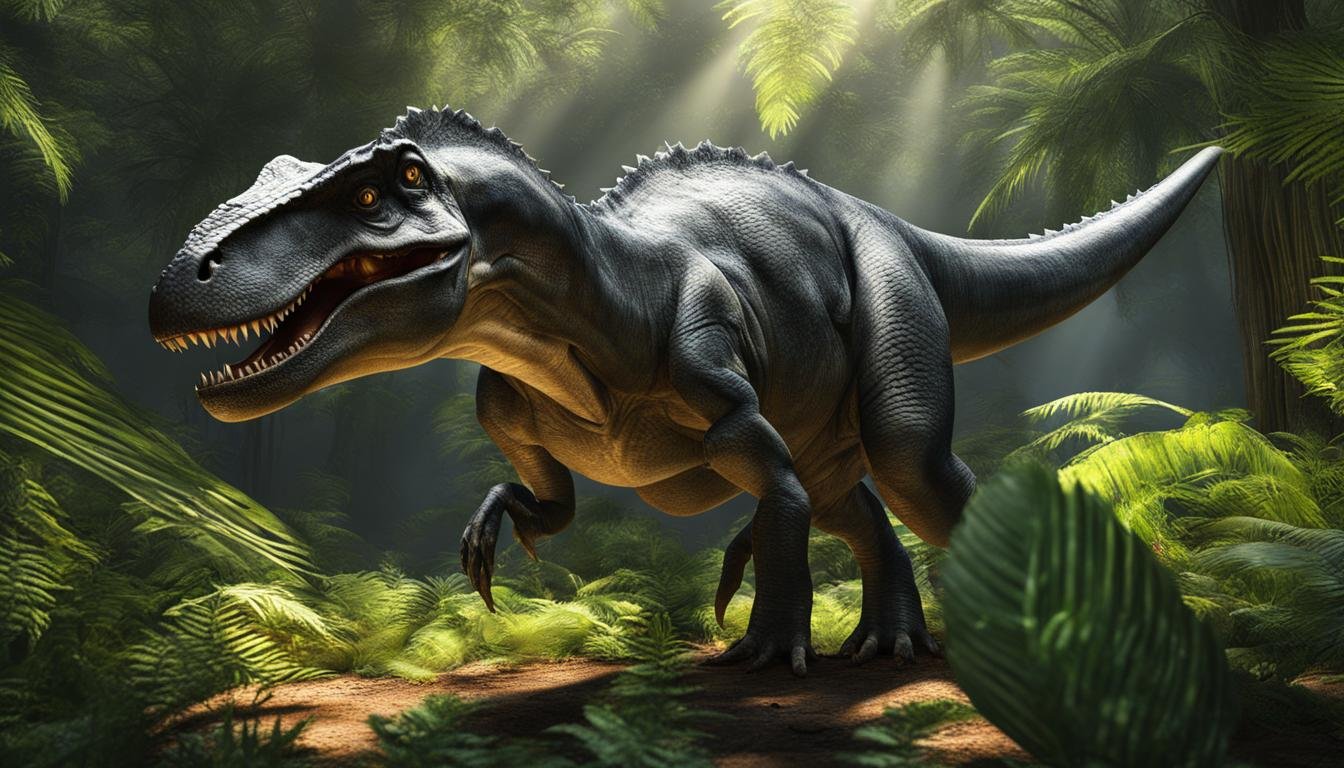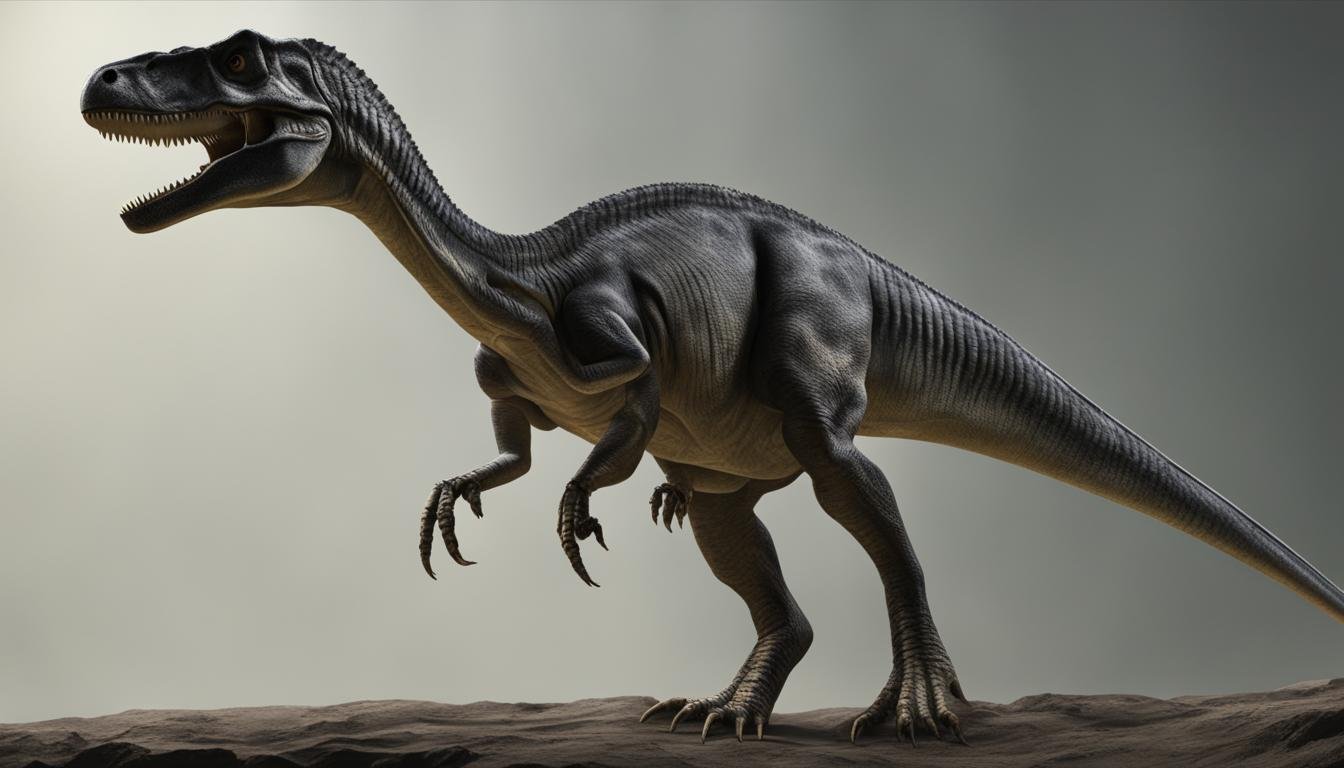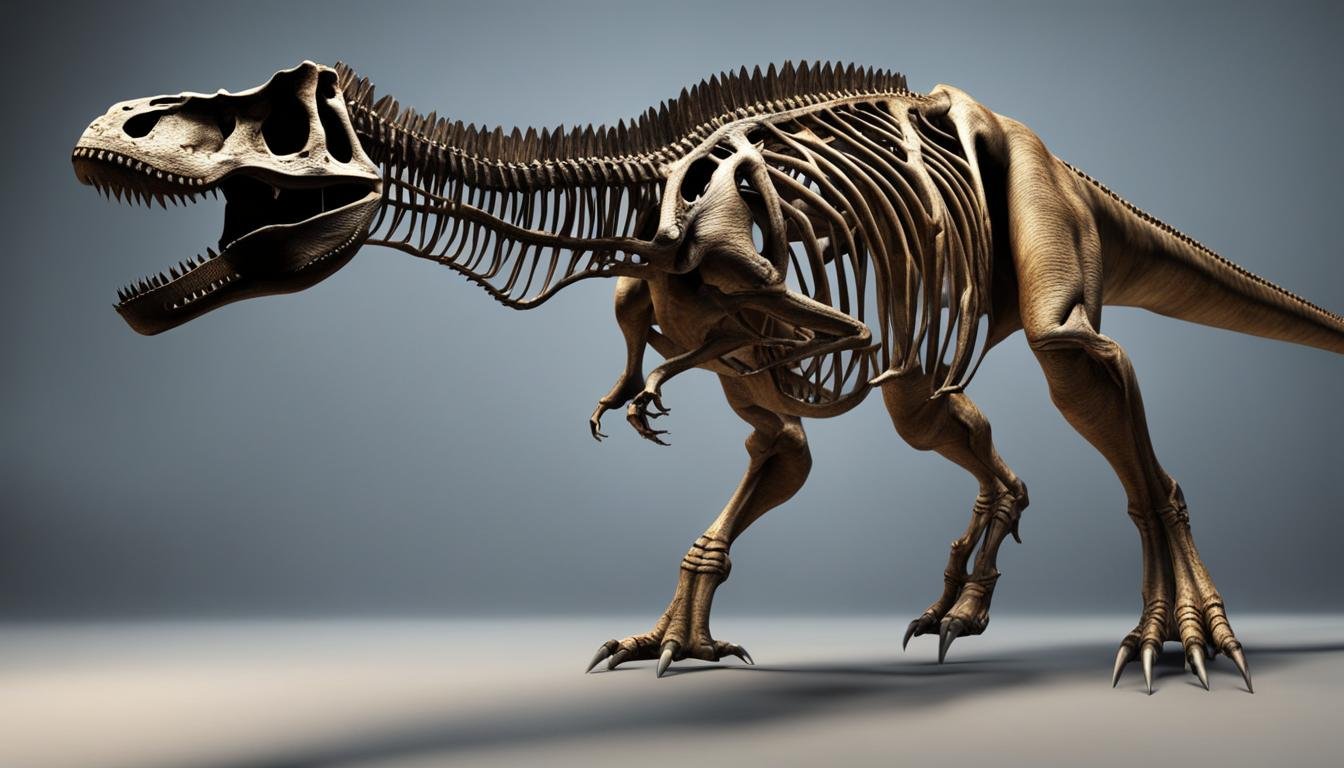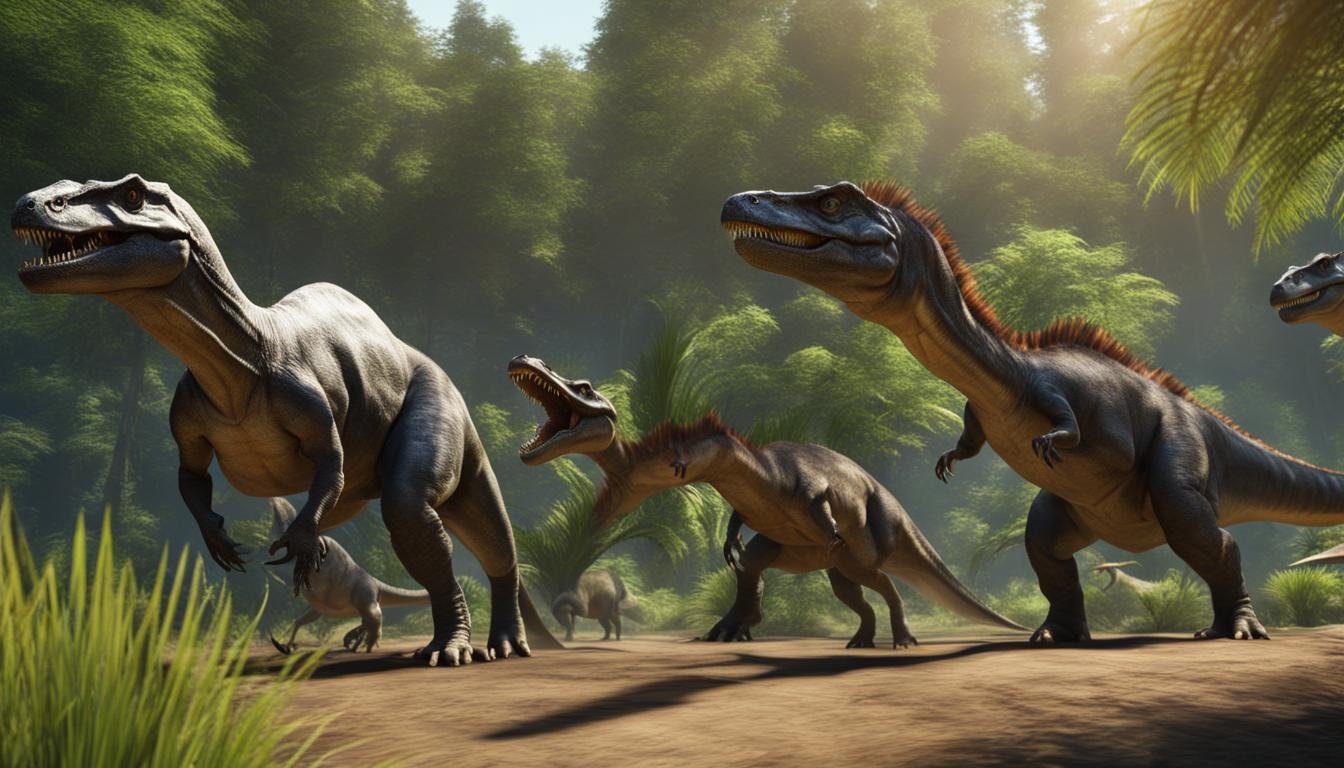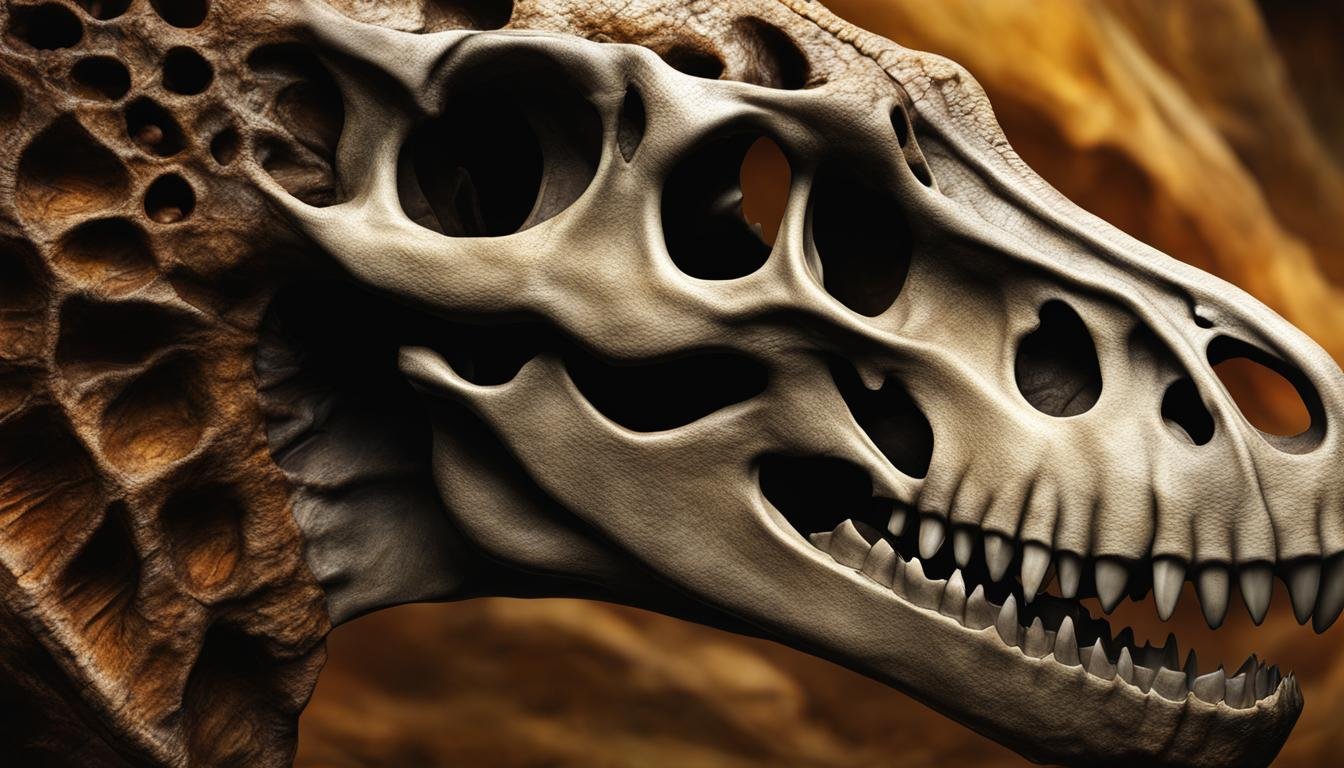Have you ever wondered how dinosaurs interacted with their environment? These extinct giants relied on their sensory organs to navigate the prehistoric world and make sense of their surroundings. From vision to hearing, smell to taste, dinosaurs had a range of senses that shaped their behaviors and survival strategies.
In this article, we will delve into the fascinating world of dinosaur sensory organs and explore how these incredible creatures perceived the world around them. Join us on this journey as we uncover the mysteries of dinosaur perception and gain a deeper understanding of these remarkable beings.
The Role of Vision in Dinosaur Behavior
Vision played a crucial role in shaping the behavior of dinosaurs. Their ability to see and interpret the world around them influenced their interactions with their environment, other dinosaurs, and their prey. The structure and placement of their eyes were key factors in determining their visual capabilities.
One important aspect of vision for dinosaurs was depth perception. By having their eyes positioned on the sides of their heads, many dinosaurs had a wider field of view, allowing them to have better depth perception. This was especially important for predators, as it helped them accurately judge distances when hunting their prey.
Additionally, dinosaurs had the ability to perceive colors. Recent studies have suggested that some dinosaurs had color vision, enabling them to see a wide array of colors in their environment. This could have played a role in their social interactions, courtship displays, and distinguishing between different food sources.
“Vision was a crucial sense for dinosaurs, shaping their behavior and interactions.”
Vision in the Darkness
While dinosaurs roamed both day and night, some species had adaptations that allowed them to see in low-light conditions. Certain dinosaurs possessed structures called sclerotic rings, which provided added support to their eyes and helped them maintain a larger pupil. This adaptation allowed for better night vision, aiding in their hunting or avoiding predators during nocturnal activities.
The Ultraviolet Advantage
Recent research has also suggested that some dinosaurs had the ability to perceive ultraviolet (UV) light. This would have given them an advantage in detecting objects or patterns that may not have been visible to other animals. It is theorized that UV vision could have aided in recognizing potential mates, foraging for food, or even identifying specific plant species.
| Vision Characteristics in Dinosaurs | |
|---|---|
| Depth Perception | Enhanced by the wide positioning of eyes on the sides of the head |
| Color Perception | Some dinosaurs likely possessed color vision, enabling them to perceive a wide range of colors |
| Night Vision | Adaptations such as sclerotic rings allowed for better vision in low-light conditions |
| Ultraviolet Perception | Some dinosaurs may have been able to see ultraviolet light, providing unique advantages in their environment |
Understanding Dinosaur Hearing
The auditory system of dinosaurs played a crucial role in their survival and communication. Just like modern-day animals, dinosaurs relied on their hearing to detect sounds, including the vocalizations of other dinosaurs and potential threats in their environment. The structure of their inner ears provides insights into their hearing capabilities.
Dinosaurs likely had a wide range of hearing frequencies, allowing them to detect both low-frequency sounds, such as the roar of a fellow dinosaur, and high-frequency sounds, like the movements of smaller creatures. This broad frequency range equipped them to better navigate and interact with their surroundings.
One interesting aspect of dinosaur hearing is their vocalizations. Some dinosaurs may have used sounds to communicate with others of their species, establish territories, or attract mates. Although we cannot directly measure or observe these vocalizations, studying the structure of their vocal apparatus, such as the presence of vocal sacs or specialized resonating chambers, can provide clues about their communication abilities.
Hearing Adaptations in Different Dinosaur Groups
| Dinosaur Group | Hearing Adaptations |
|---|---|
| Theropods (meat-eaters) | Acute hearing to locate prey |
| Sauropodomorphs (long-necked herbivores) | Hearing frequencies to communicate in herds |
| Ornithopods (duck-billed herbivores) | Ability to detect low-frequency vocalizations |
“The study of dinosaur hearing provides valuable insights into their communication, social behaviors, and interactions with the environment.”
By understanding dinosaur hearing, scientists can reconstruct how these ancient creatures perceived their world. The combination of hearing, vision, smell, touch, and taste allowed dinosaurs to navigate their environment and interact with others of their kind. Further research and analysis of dinosaur auditory systems will continue to enhance our understanding of these fascinating extinct giants.
The Sense of Smell in Dinosaurs
Dinosaurs, like many modern animals, relied heavily on their sense of smell to navigate their prehistoric world. Their olfactory system, including the olfactory bulbs, was well-developed, indicating a heightened sense of smell. Different dinosaur species may have had varying numbers of olfactory genes, suggesting differences in their ability to detect and process different odors.
Through their sense of smell, dinosaurs were able to locate food sources, detect predators, and communicate with potential mates. The ability to detect and follow scent trails would have been especially advantageous for carnivorous dinosaurs in their hunt for prey. Additionally, the sense of smell would have played a crucial role in avoiding toxic plants and distinguishing between edible and non-edible vegetation for herbivorous dinosaurs.
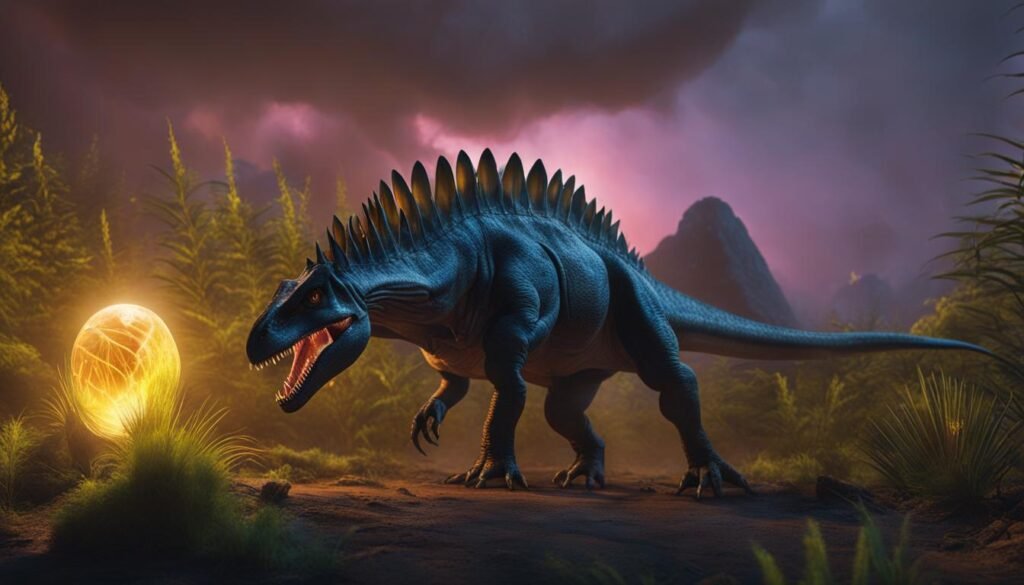
Further research into the olfactory capabilities of dinosaurs has provided insights into the scent-processing mechanisms they may have possessed. By studying the size and structure of the olfactory bulbs, scientists can gain a better understanding of how dinosaurs detected and interpreted different smells. This information sheds light on the sensory world of these extinct giants, helping us paint a more complete picture of their lives and interactions with their environment.
| Dinosaur Species | Olfactory Genes | Odor Detection Abilities |
|---|---|---|
| Velociraptor | 8 | Excellent |
| Triceratops | 5 | Good |
| Tyrannosaurus Rex | 6 | Highly Developed |
The Importance of Taste for Dinosaurs
Dinosaurs, like modern animals, relied on their sense of taste to navigate their feeding behaviors and food recognition. While studying dinosaurs’ sense of taste is challenging due to limited fossil evidence, scientists believe that taste played a vital role in their survival and dietary preferences. The ability to recognize different tastes likely influenced their food choices and helped them avoid potentially toxic plants.
Comparisons with modern birds, who are descendants of dinosaurs, provide insights into how taste may have influenced dinosaur behaviors. Some dinosaurs may have lacked the ability to taste certain flavors, such as sugar, suggesting that their taste receptors might have differed from present-day animals. This distinction in taste perception could have impacted their dietary preferences and feeding strategies.
Feeding Behaviors and Food Recognition
The sense of taste would have been particularly important for herbivorous dinosaurs, as they needed to accurately identify edible plant materials and detect any potentially harmful substances. By recognizing different tastes, herbivorous dinosaurs could distinguish between nutritious plants and those that could be poisonous or indigestible.
Meat-eating dinosaurs, on the other hand, may have relied more on their sense of smell and vision to locate prey rather than solely on taste. While taste likely played a role in the recognition of suitable prey, the ability to detect the scent of potential meals seems to have been crucial for carnivorous dinosaurs in finding food sources.
| Taste-related Characteristics | Herbivorous Dinosaurs | Meat-eating Dinosaurs |
|---|---|---|
| Dietary preferences | Recognizing edible plant materials and avoiding toxic plants | Identifying suitable prey |
| Feeding strategies | Selecting nutritious plants to consume | Locating and capturing prey |
| Sensory reliance | Relied on taste, smell, and visual cues | Relied on smell and visual cues, with taste playing a secondary role |
The sense of taste likely played a vital role in dinosaur feeding behaviors, influencing their dietary preferences and helping them avoid potentially harmful substances. For herbivorous dinosaurs, taste would have been particularly important in recognizing edible plant materials. On the other hand, meat-eating dinosaurs may have relied more on their sense of smell and vision for locating prey, with taste playing a secondary role. Further research into dinosaur taste mechanisms will provide valuable insights into their feeding strategies and ecological interactions.
The Role of Touch in Dinosaur Sensory Experience
Dinosaurs may be known for their formidable size and strength, but their ability to sense and perceive their environment extended beyond their visual and auditory capabilities. Touch, often an overlooked sense in discussions about dinosaurs, played an essential role in their sensory experience and interaction with the world around them. By examining the unique skin structures and integumentary sense organs of various dinosaur species, scientists have gained valuable insights into how these ancient creatures perceived touch.
Dinosaur skin was not uniform across all species; it varied in texture, patterning, and the presence of scales, feathers, or other structures. These skin adaptations likely served different purposes, with some providing protection or insulation, while others played a role in sensory perception. For example, integumentary sense organs found in some dinosaurs, similar to those in modern crocodiles, may have allowed them to detect prey or sense changes in temperature.
Further research using advanced techniques such as scanning electron microscopy and biomechanical modeling has provided additional clues about how dinosaurs experienced touch. By examining the microstructures of dinosaur skin and the biomechanics of their movements, scientists can infer how touch sensations were transmitted and processed by these ancient creatures. These advancements in research have expanded our understanding of the sensory world of dinosaurs beyond vision and hearing.
| Dinosaur Species | Skin Structure | Sensory Adaptations |
|---|---|---|
| Tyrannosaurus rex | Scales | Integumentary sense organs for prey detection |
| Stegosaurus | Plated skin | Possibly used for intraspecific communication |
| Triceratops | Bumpy skin with horns | Sensory receptors for detecting tactile sensations |
While much remains to be discovered about how dinosaurs perceived touch, these findings highlight the importance of considering all sensory modalities when studying these ancient creatures. Incorporating touch into our understanding of dinosaur sensory perception not only enhances our knowledge of their biology but also provides a more holistic view of their lives and behaviors.
The Dynamics of Dinosaur Brains and Nervous System
Brain Structure and Function
Understanding the complexity and capabilities of dinosaur brains can provide valuable insights into their intelligence and behavior control. Fossilized skulls have allowed scientists to study the size and structure of dinosaur brains. Contrary to previous beliefs about their intelligence, recent research suggests that some theropods had complex brain structures, indicating a higher level of cognitive abilities.
Comparisons between dinosaur brains and those of modern animals have revealed interesting findings. While dinosaurs had relatively small brains compared to their body sizes, the proportion of the brain devoted to the olfactory system was larger, indicating the importance of smell in their sensory perception and behavior.
The Nervous System and Sensory Processing
The nervous system of dinosaurs played a critical role in their sensory processing and the control of their behaviors. Nerves connected their sensory organs, such as the eyes, ears, and olfactory system, to their brains, allowing them to perceive and interpret information from their environment. The complexity and organization of their nervous systems suggest that dinosaurs had the ability to process sensory information and respond accordingly.
Furthermore, the integration of sensory information from different organs likely influenced their behaviors, such as hunting, communication, and social interactions. The development and connectivity of the nervous system in dinosaurs evolved to meet the specific demands of their environment, enabling them to thrive and adapt to changing conditions.
| Brain Size Comparison | Dinosaur | Modern Animal |
|---|---|---|
| Average Brain Size | Relatively small compared to body size | Varies across species |
| Proportion Devoted to Olfactory System | Relatively large | Varies across species |
| Brain-to-Body Size Ratio | Lower than modern animals | Varies across species |
“The study of dinosaur brains and nervous systems offers fascinating insights into the cognitive abilities and sensory processing of these ancient creatures.” – Dr. Sarah Johnson, Paleontologist
Overall, the examination of dinosaur brains and nervous systems sheds light on their intelligence, sensory capabilities, and behavior control. While their brain sizes may have been relatively small compared to modern animals, the proportion devoted to the olfactory system highlights the importance of smell in their sensory perceptions. The complexity of their nervous systems suggests the ability to process and integrate information from different sensory organs, allowing for adaptive behaviors in their prehistoric environment.

By further studying the dynamics of dinosaur brains and nervous systems, scientists can continue unraveling the mysteries of these incredible creatures, gaining a deeper understanding of their sensory evolution and the factors that contributed to their survival in the ancient world.
Sensory Adaptations in Dinosaurs
Dinosaurs evolved various sensory adaptations to enhance their survival in the prehistoric world. These adaptations allowed them to navigate their environment, locate food sources, detect predators, and communicate with mates. Let’s explore some of the remarkable sensory capabilities of these ancient giants.
Visual Capabilities
Different dinosaur species had unique visual adaptations that suited their specific lifestyles. Some dinosaurs, such as the theropods, had forward-facing eyes that provided binocular vision. This allowed them to accurately judge distances and track moving prey. Other dinosaurs, like the herbivorous sauropods, had eyes positioned on the sides of their heads, giving them a wide field of view to detect approaching predators.
Hearing Abilities
The ability to hear was crucial for dinosaurs to communicate with each other and detect potential threats. Many dinosaurs had well-developed auditory systems with specialized structures in their inner ears. This enabled them to detect a wide range of frequencies, from the low rumbles of fellow dinosaurs to the high-pitched sounds of smaller creatures. Acute hearing allowed dinosaurs to coordinate hunting strategies and avoid surprise attacks.
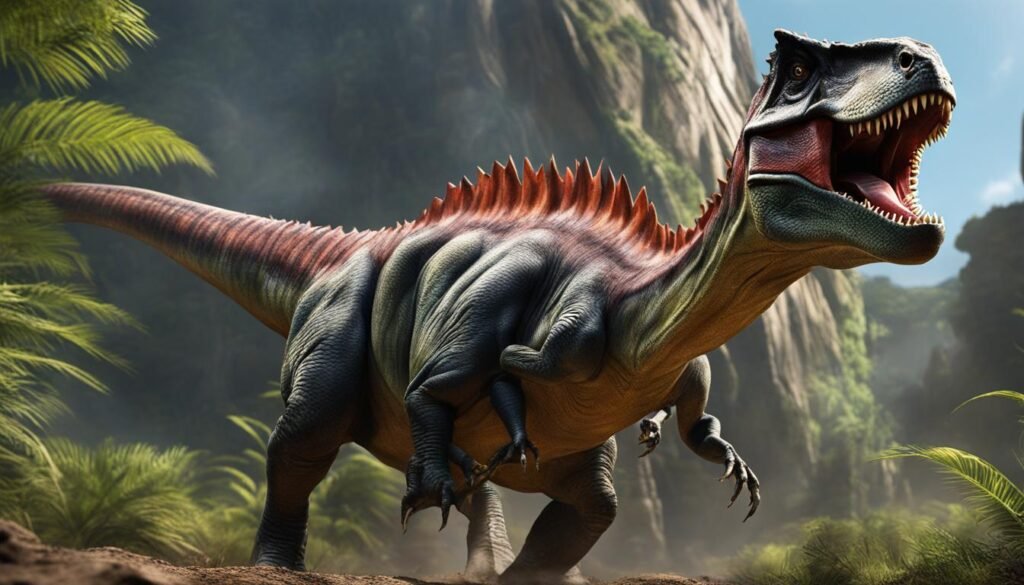
Dinosaurs’ sensory adaptations played a key role in their ecological interactions and behavioral strategies. These sensory enhancements were shaped by the environment and influenced by the specific needs of each dinosaur group. By studying these sensory adaptations, scientists gain valuable insights into the fascinating world of these extinct giants.
| Dinosaur Group | Visual Capabilities | Hearing Abilities |
|---|---|---|
| Theropods | Forward-facing eyes for binocular vision | Acute hearing for hunting efficiency |
| Hadrosaurs | Eyes on the sides of the head for a wide field of view | Well-developed auditory systems for communication |
| Ankylosaurs | Eyes positioned high on the head for scanning the surroundings | Sensitive hearing for detecting predators |
| Ceratopsians | Forward-facing eyes with a large range of focus | Excellent hearing for intra-species communication |
Sensory Predation Strategies in Dinosaurs
Dinosaurs, as fearsome predators, relied on their sensory abilities to effectively locate and capture their prey. Through their heightened senses of vision, hearing, and smell, these ancient creatures developed various predation strategies to ensure their survival. By utilizing their sensory adaptations, dinosaurs were able to detect and pursue their prey with remarkable precision.
“Dinosaurs employed their exceptional senses to effectively hunt and capture their prey, utilizing their vision, hearing, and smell to detect and track potential food sources,” explains Dr. Sarah Thompson, paleontologist and lead researcher on dinosaur predation strategies.
One of the key hunting strategies employed by dinosaurs was visual detection. With their sharp eyesight and binocular vision, predatory dinosaurs could accurately judge distances and identify potential prey from a considerable distance. This provided them with a distinct advantage in the pursuit and capture of their victims.
Additionally, dinosaurs relied on their acute sense of hearing for prey detection. By detecting even the slightest sounds, they could locate the movements of their prey, anticipate their behavior, and plan their attacks accordingly. The ability to detect subtle sounds allowed dinosaurs to maintain the element of surprise, ensuring successful hunts.
Sensory Predation Strategies in Different Dinosaur Groups
Different dinosaur groups developed unique sensory predation strategies based on their specific adaptations and ecological niches. For example, large theropods such as Tyrannosaurus rex utilized a combination of visual dominance and powerful olfactory senses to locate and pursue their prey. Their sharp eyesight and heightened sense of smell allowed them to detect scent trails and track down potential meals.
On the other hand, smaller theropods like Velociraptors relied more on their keen sense of hearing and agility to ambush their prey. Their ability to detect subtle vibrations and interpret the movements of their victims made them highly effective hunters.
To summarize, dinosaurs employed a range of sensory adaptations and strategies to successfully hunt and capture their prey. Through their excellent vision, acute hearing, and heightened sense of smell, these ancient predators were able to detect, track, and ultimately secure their sustenance in the prehistoric world.
| Sensory Predation Strategies | Dinosaur Group | Description |
|---|---|---|
| Visual Dominance and Olfactory Detection | Tyrannosaurus rex | Relied on sharp eyesight and heightened sense of smell to detect scent trails and track down prey. |
| Hearing Detection and Ambush | Velociraptors | Depended on acute hearing and agility to detect prey and plan ambushes. |
Distinguishing Sight and Senses of Plant-Eating vs. Meat-Eating Dinosaurs
Plant-eating dinosaurs and meat-eating dinosaurs had distinct sensory abilities that were adapted to their specific lifestyles. Understanding the differences in their senses can give us valuable insights into how these dinosaurs interacted with their environment. Let’s take a closer look at the unique sensory characteristics of these two groups.
Sight
Plant-eating dinosaurs, also known as herbivores, had eyes positioned on the sides of their heads. This allowed them to have a wide range of monocular vision, giving them a broader field of view. It helped them detect predators approaching from different directions. On the other hand, meat-eating dinosaurs, or carnivores, had forward-facing eyes that provided them with binocular vision. This allowed them to accurately judge distances and focus on a single point, aiding in their hunting capabilities.
Smell
The sense of smell was crucial for both plant-eating and meat-eating dinosaurs. However, plant-eating dinosaurs relied more heavily on their sense of smell to locate vegetation and detect potential threats. Their keen sense of smell helped them differentiate between different types of plants and avoid toxic ones. Meat-eating dinosaurs, on the other hand, used their sense of smell to track down prey and identify potential mates.
Hearing
While both groups of dinosaurs had acute hearing, there were slight differences in their hearing capabilities. Plant-eating dinosaurs likely had a wider range of hearing frequencies, allowing them to detect low-frequency sounds from approaching predators and high-frequency sounds from smaller creatures. This helped them stay alert and avoid danger. Meat-eating dinosaurs had excellent hearing as well, allowing them to locate and track down prey with precision.
| Sight | Smell | Hearing | |
|---|---|---|---|
| Plant-Eating Dinosaurs | Wide range of monocular vision | Keen sense of smell for locating vegetation and detecting threats | Wide range of hearing frequencies |
| Meat-Eating Dinosaurs | Forward-facing eyes for binocular vision | Sense of smell for tracking down prey and identifying potential mates | Excellent hearing for locating and tracking prey |
Through their distinct visual, olfactory, and auditory adaptations, plant-eating and meat-eating dinosaurs were able to thrive in their respective niches. These sensory abilities played a crucial role in their survival and interactions with their environment.
Exploring the Different Sensory Abilities of Dinosaurs
Dinosaurs, both herbivorous and carnivorous, possessed remarkable sensory abilities that were essential for their survival and interactions with the environment. These extinct giants relied on their sensory organs, including vision, smell, hearing, touch, and taste, to navigate their prehistoric world.
Vision
For dinosaurs, vision played a crucial role in their behavior and interactions. The structure and placement of their eyes influenced their depth perception and color perception. Some dinosaurs had excellent night vision, allowing them to navigate and hunt in low-light conditions. Additionally, recent studies suggest that certain dinosaurs could perceive ultraviolet light, which could have served various purposes, such as mate selection or foraging.
Smell
The sense of smell was highly developed in many dinosaurs, aiding them in locating food sources, detecting predators, and communicating with mates. The olfactory system, including the olfactory bulbs, played a crucial role in their heightened sense of smell. While different species may have had varying abilities in odor detection, the olfactory genes found in some dinosaurs indicate their keen olfactory sense and its significance in their survival.
Hearing
Dinosaurs relied on their acute hearing to detect sounds and communicate with others. The size and structure of their inner ears provided insights into their hearing capabilities. It is believed that dinosaurs had a wide range of hearing frequencies, allowing them to detect low-frequency sounds from fellow dinosaurs and high-frequency sounds from smaller creatures.
Touch
Although often overlooked, touch was an essential sense for dinosaurs. Their skin featured various structures, such as scales or feathers, which aided in touch perception. Additionally, some dinosaurs had integumentary sense organs similar to modern crocodiles, enabling them to detect prey and sense temperature changes.
Taste
While limited fossil evidence makes studying dinosaurs’ sense of taste challenging, it is believed to have played a vital role in their feeding behaviors. The ability to recognize different tastes likely influenced their food choices and helped them avoid potentially toxic plants. Comparisons with modern birds suggest that some dinosaurs may have lacked the ability to taste certain flavors, such as sugar.
Through our exploration of the sensory abilities of dinosaurs, including vision, smell, hearing, touch, and taste, we gain a deeper understanding of these fascinating creatures and how they interacted with their environment. These remarkable adaptations allowed dinosaurs to thrive and survive in the prehistoric world.
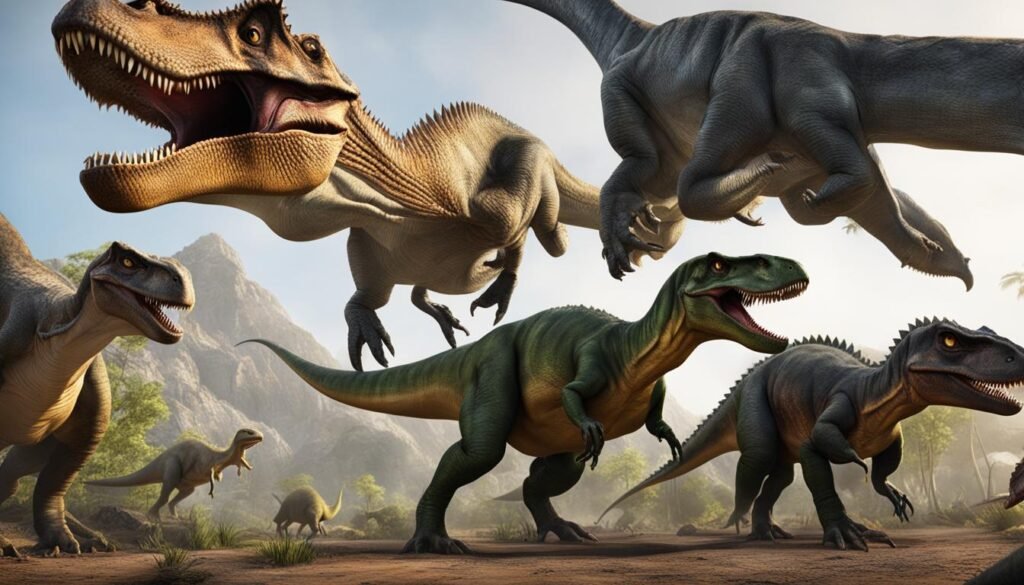
Conclusion
In conclusion, dinosaurs displayed an array of sensory capabilities crucial for their survival. Their advanced vision, including depth and color perception, and potential ultraviolet light detection, played a significant role in their behavior.
Hearing was also key, with their inner ears detecting a broad range of frequencies for communication and predator awareness. Their well-developed sense of smell aided in finding food, detecting danger, and mating.
While evidence is limited on their taste abilities, touch was undoubtedly vital, with skin structures enhancing their tactile sense. The dinosaur brain and nervous system suggest intelligence and complex sensory processing, particularly in some theropods.
These sensory adaptations, varying across different species, were vital for their predatory strategies and lifestyle, whether as plant-eaters or meat-eaters. Studying these sensory systems provides profound insights into dinosaur behavior and their evolutionary journey.

